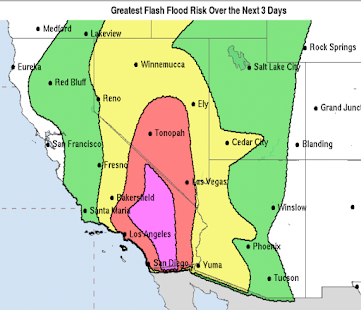So How Did That Experimental Forecast Work Out?
See below for the forecast posted at 12:16pm.
The timing was poor. The forecast showed the storms moving into the Kansas City - Lawrence areas around 4:30 to 5pm. That was way too late, they moved into that specific area around around 2:15.
That said, as a "heads up," the location and magnitude of the threat were good. I posted for 70 mph winds and winds of 75 mph were reported just southwest of Lawrence, and similar winds were reported north of downtown Kansas City. Kansas City International Airport reported a gust to 62 mph, but they were north of the highest winds as indicated by radar. The experimental forecast was posted about a half hour before the NWS issued its severe thunderstorm watch for winds up to 75 mph.
If you compare the location of the radar echoes, it is pretty good but -- again -- they were much earlier than forecast.
 |
| Each of the symbols represent large hail or strong winds. Click to enlarge. |
Meteorology continues to make progress. As dual polarization radar starts to be used as a source of data to feed into these experimental forecasts in 2012 and beyond, they will get better.
Hope you thought this was a worthwhile experiment. I'd be interested in your comments about the experiment and whether you thought it was worthwhile data.
Update 3:43pm: The Kansas City Star is reporting 30,000 "customers" (homes and businesses) without power in the KC area which translates to roughly 100,000 people.
Second update 3:50pm: About 1,000 people without power in the Lawrence area.
Update 3:43pm: The Kansas City Star is reporting 30,000 "customers" (homes and businesses) without power in the KC area which translates to roughly 100,000 people.
Second update 3:50pm: About 1,000 people without power in the Lawrence area.




Comments
Post a Comment